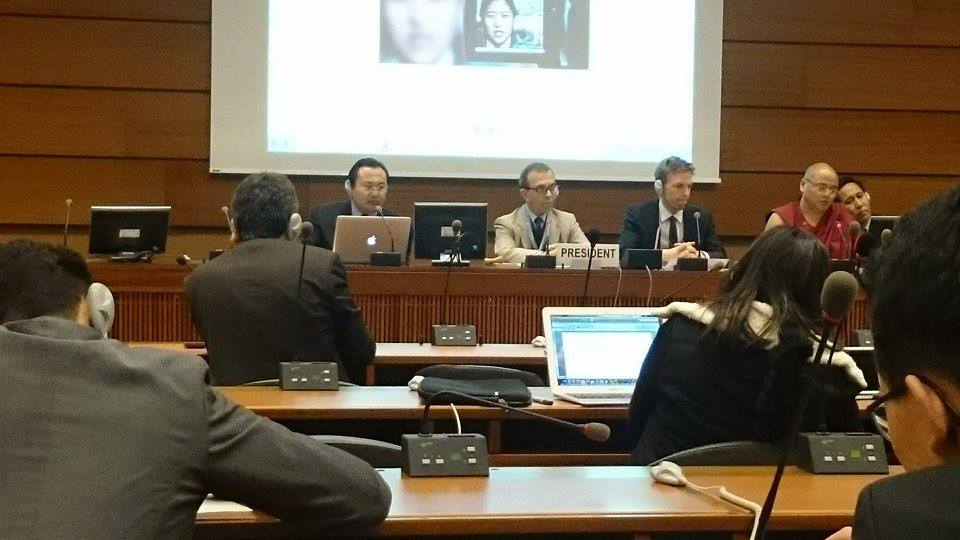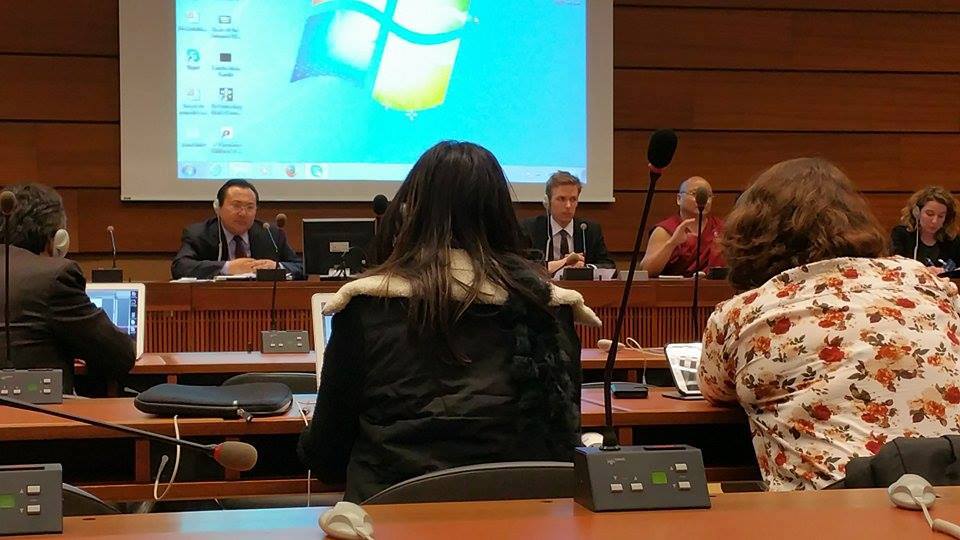| SMHRIC |
| March 25, 2015 |
| New York |
 |
|
 |
|
|
|
|
Good afternoon!
I would like to thank the members of the Society for Threatened Peoples for organizing this event and providing us with an opportunity to discuss the problems and crisis we are facing because of the Chinese government’s intensification of systematic policies of political repression, economic exploitation, cultural assimilation, and environmental destruction in Southern Mongolia, East Turkistan and Tibet.
Southern Mongolia, known as “Inner” Mongolia, became China’s first so-called “Autonomous Region” when the Chinese Communist Party took control over the region in 1947. Since then, the Chinese Communist Party’s policies of ethnic-cleansings, political witch-hunts, large scale population transfers, and forced cultural assimilation have devastated the social and cultural fabric of the Southern Mongolian people. In addition, it has led to near total destruction of the natural environment in Southern Mongolia.
As a result of mass migration policies, today, the Mongolians constitute only 18% of the total population on their own land; the natural grasslands where the Mongolians maintained their nomadic way of life for millennia have been destroyed first by Chinese farmers and second by miners bent on industrialization of the grasslands.
As early as the mid 1940s, tens of thousands of Mongolians were brutally killed and Mongolian land was effectively taken over by the Chinese settlers during the so-called “Land Reform Movement”.
In the 1950s, a massive political witch-hunt was carried out against Mongolian elites in Southern Mongolia in the name of “Anti-Right Movement”.
From the late 1960s to early 1970s, the Chinese authorities carried out a large-scale genocide in Southern Mongolia in the name of “purging the members of the anti-revolutionary treasonous group Inner Mongolian People’s Revolutionary Party”. Nearly 50,000 Mongolians were killed, and a half million arrested, tortured, and imprisoned.
In 1981, a large-scale Mongolian students’ movement took place in Southern Mongolia in protest of the Chinese authorities’ plan for a massive Chinese migration to the region. Three months later authorities cracked down on the protesters and the migration of Chinese farmers from other provinces continued.
In 1995, the Chinese authorities cracked down on a Mongolian peaceful organization called the Southern Mongolian Democratic Alliance (SMDA). Members of the organization were arrested, detained and sent to jail. Mr. Hada, President of the SMDA, and Mr.Tegshi, Vice President of the SMDA, were sentenced to 15 years and 10 years in jail respectively on charges of “splitting the country and engaging in espionage”.
Mr.Hada was released on December 9, 2014, after serving the full term of 15 years imprisonment and 4 years of extrajudicial detention. Yet, he has been placed under de facto house arrest in an apartment run by the Chinese Public Security authorities. His freedom to communicate and move around at will are strictly restricted. His wife Xinna and son Uiles are also deprived of their basic freedoms and living under the same restrictions.
In 2001, to justify its systematic land grabs and cover up their destruction of the natural environment, the Chinese government adopted the so-called “Ecological Migration” policy in Southern Mongolia. This policy was officially instituted to forcibly relocate the entire Mongolian herding and semi-herding population from their ancestral grazing lands to the overwhelmingly Chinese populated agricultural and urban areas under the pretext of “protecting the grassland eco-system.”
Another policy adopted for the purpose of eradicating the Mongolian traditional way life was the “Total Ban over Livestock Grazing” (or “jin mu”). Under this policy, Mongolian herders grazing livestock in the grasslands were treated as criminals and subjected to large fines or confiscation of their livestock.
In 2009, with its largest coal and natural gas resources in China, including production of 95% of the world’s rare earth supplies, Southern Mongolia was advertised by the Chinese Government as “China’s Energy Base.” Chinese mining giants as well as thousands of private miners have rushed to Southern Mongolia chasing their fortune. Herders’ grazing lands have been illegally occupied and opened up for mines. Herders have forcibly been displaced from their land without adequate compensation or proper resettlement.
Tensions have escalated between the Mongolian herders and the Chinese authorities as clashes took place almost on a daily basis between the Mongolian herders and land grabbers.
In 2011, the brutal killing of a Mongolian herder named Mergen by a Chinese mining truck sparked a large-scale, region-wide protest by Mongolian herders and students. Chinese authorities mobilized the People’s Liberation Army and large numbers of police forces to crackdown on the protest.
In the most recent case, just two month ago, another large-scale protest by Mongolian herders took place in western Southern Mongolia’s Durbed and Sunid Banners. Herders went to Beijing and staged protests in front of the Chinese Central Government branches. They also took to the streets in the regional capital and their hometowns. Chinese authorities cracked down on them, and at least 6 herders were arrested and detained.
We have confirmed that at least 59 major incidents including protests and clashes occurred in Southern Mongolia since 2011. In the past year alone, nearly 300 Mongolian herders have been arrested, detained or jailed for defending their land.
China is a signatory to a number of international human rights conventions including the United Nations Declaration on Rights of Indigenous Peoples (UNDRIP) and International Covenant on Civil and Political Rights. China must abide by these human rights conventions and respect the basic human rights and fundamental freedoms of the Mongolian citizens of Southern Mongolians.
Thank you,
Enghebatu Togochog
Director of SMHRIC
March 16, 2015





 Beyond
Great Walls: Environment, Identity, and Development on the Chinese
Grasslands of Inner Mongolia
Beyond
Great Walls: Environment, Identity, and Development on the Chinese
Grasslands of Inner Mongolia China's
Pastoral Region: Sheep and Wool, Minority Nationalities, Rangeland
Degradation and Sustainable Development
China's
Pastoral Region: Sheep and Wool, Minority Nationalities, Rangeland
Degradation and Sustainable Development The
Ordos Plateau of China: An Endangered Environment (Unu Studies on
Critical Environmental Regions)
The
Ordos Plateau of China: An Endangered Environment (Unu Studies on
Critical Environmental Regions)